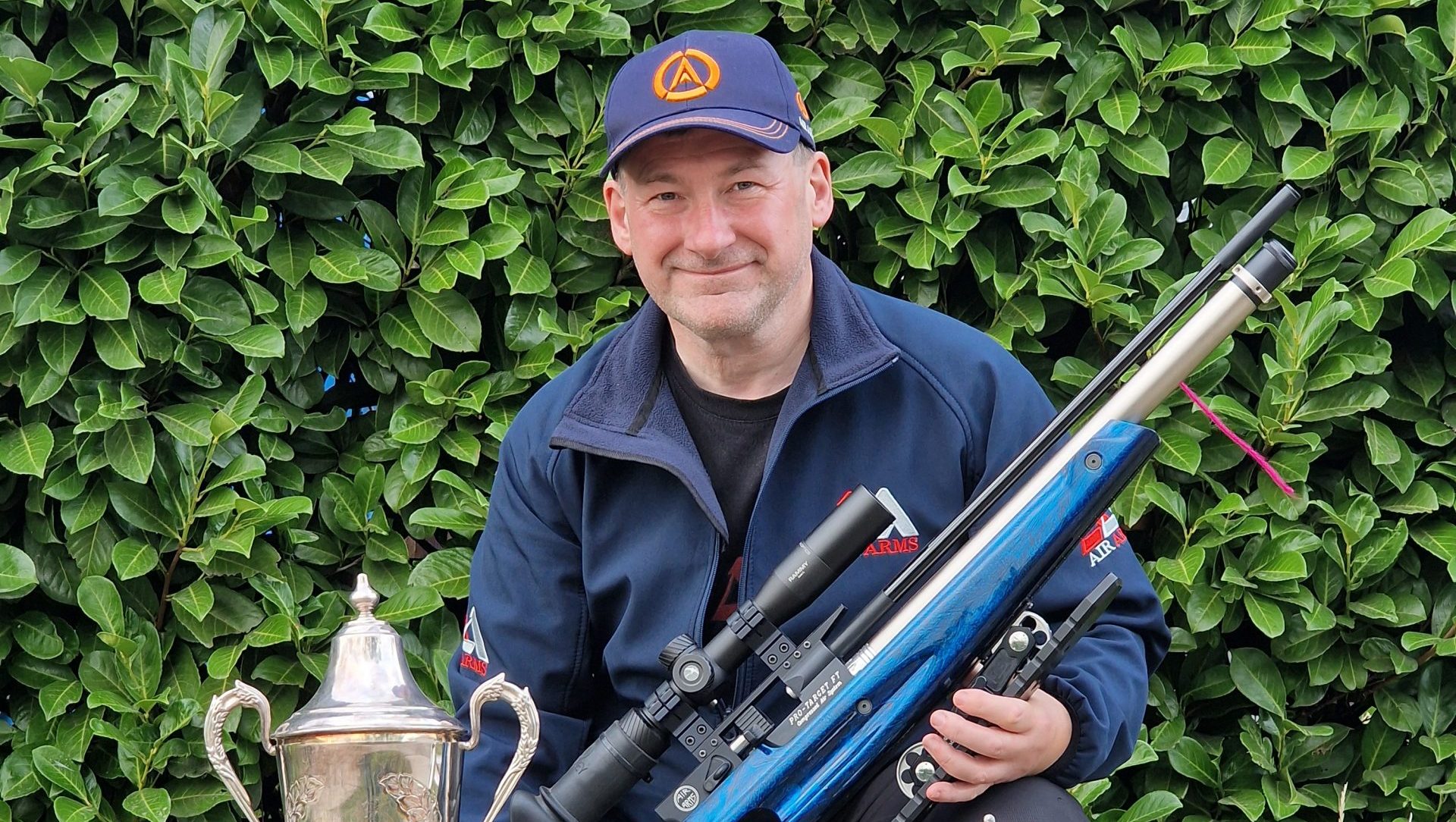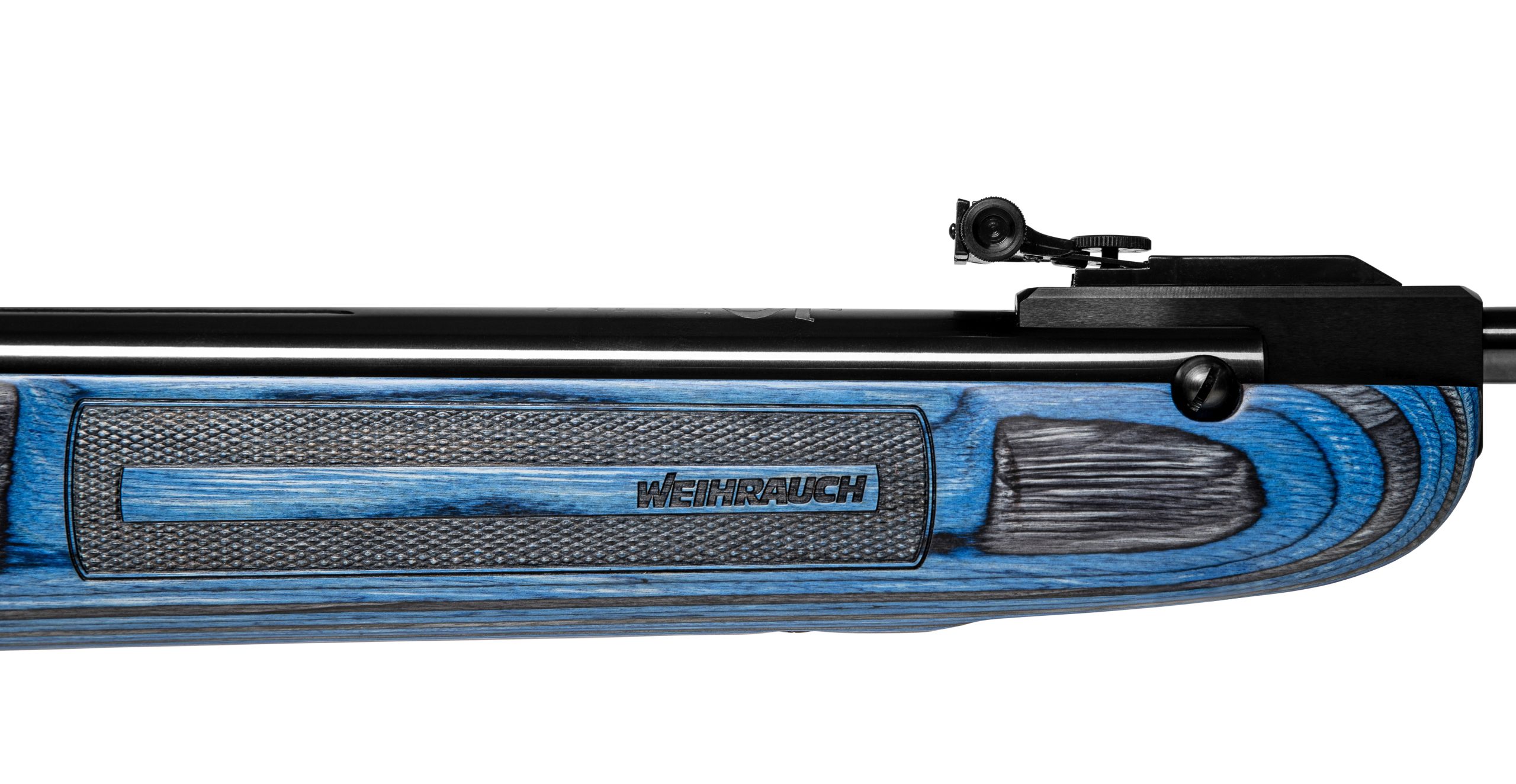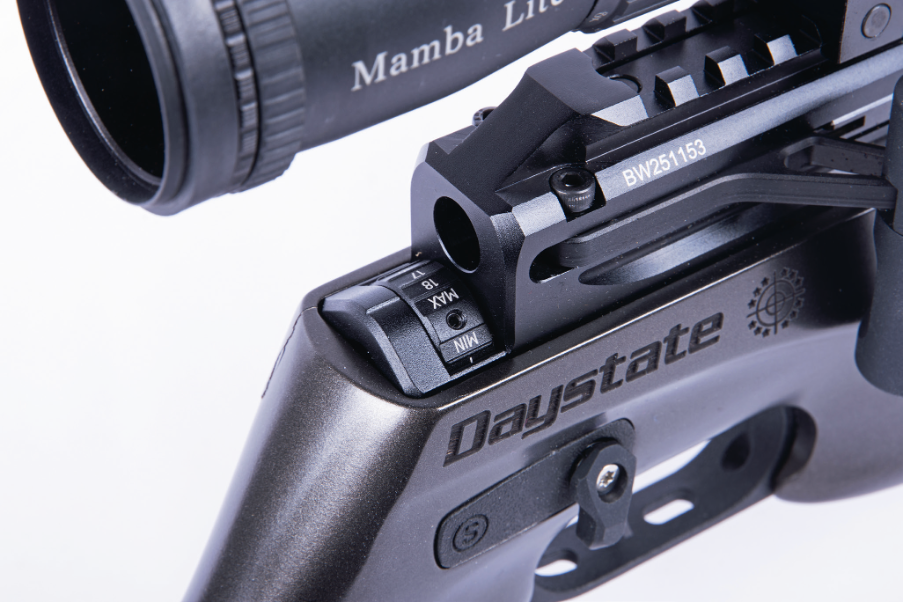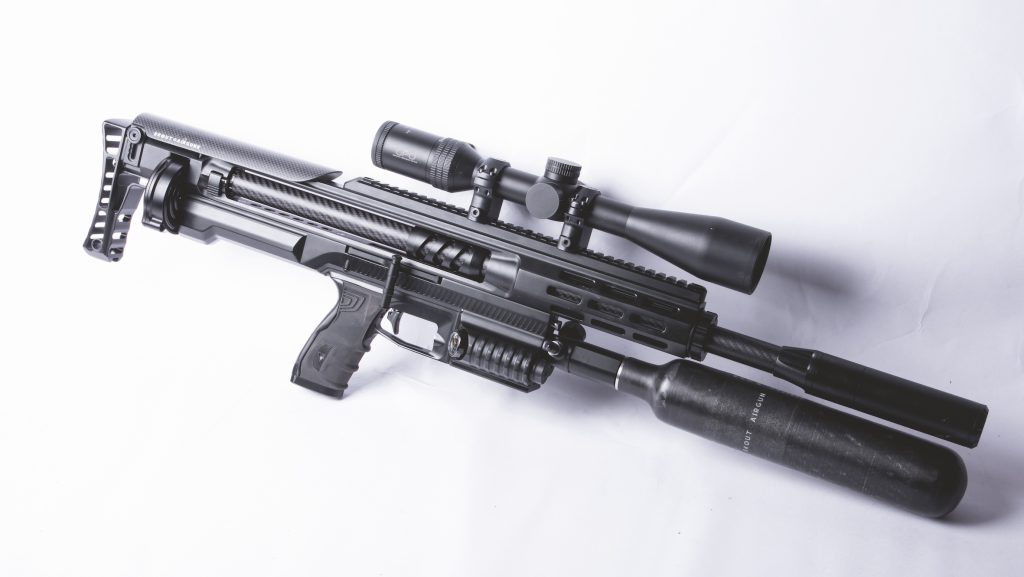- News
- Gear
- Airguns
- Shooting
- More
-
-
More
-
-
News
National Trust deploys air rifle volunteers for grey squirrel control
By Hollis Butler (Group News Editor)
-
News
Weihrauch releases limited edition HW50S to mark 75th anniversary
By Hollis Butler (Group News Editor)
-
-
-
-
-
Review: DIET WEIHRAUCH
If you’re in the market for a medium-weight springer, Pete Evans may have just what you’re looking for!

As a rule, Weihrauch doesn’t often attract criticism for their guns, although the subject of weight does arise from time to time. During the early 1980s, when the HW80 and HW77 were launched, there was really only the HW50 to choose if you wanted something with a bit less bulk. I remember Ivan Hancock, of Venom fame, being once asked by a customer how they might lose some weight on their HW80. His enigmatic reply was, ‘Fit a walnut stock’. So, that was about it – if you wanted a lighter weight HW80, you had to fit a custom walnut stock, else cut a big hole in the cheekpiece.
Presumably keen to address the weight issue, Weihrauch in 1986 produced a prototype gun titled the HW85. This model closely resembled the HW80, although was a fair bit lighter, so you would think that it would be an instant best seller.
Early reviews of the gun were less than enthusiastic, although not with any specific gripes, the undercurrent seemed to be more along the lines of challenging why the gun was needed at all. With the production guns available the following year, the press were a little more sympa thetic, but still not particularly complimentary in their comments.
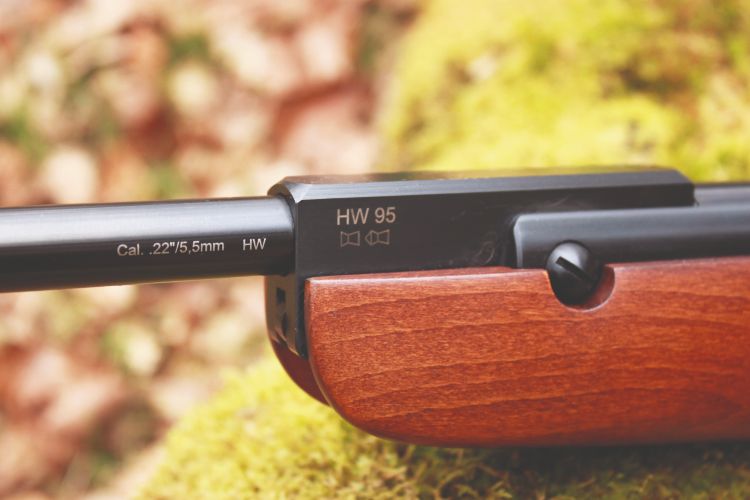
It seems that although there were some who were keen to see a lighter weight option, the majority were not ready for such a change, and so the model dropped into obscurity. However, never one to totally erase models Weihrauch do still offer the ‘85, featured in their catalogue, but still not seen very often in the UK. Thankfully, Weihrauch persevered with the theme by offering the HW95 in 1995, which became one of their best-selling rifles to date.
INSTANT CLASSIC
If the UK was not ready for the HW85, it certainly was for the HW95, with positive reviews from the press and public from the outset. From an efficiency standpoint, its 26mm cylinder was far more suitable for the 12 ft.lb. limit than the 30mm found on the HW80, its slimmer profile saving around 0.5kg over the weight of its stablemate.

In the shooting stakes, it gave nothing away in accuracy to the other HW breakbarrels, and being a bit cheaper than an ‘80 certainly helped sales on their way. Early models had a muzzle weight in lieu of open sights, although open-sighted models were available, later giving way to predominately carbine-length barrels fitted with the benchmark HW moderator.
All these guns have a bayonet-type fixing for the rear block, held by four pins; a secure system that went on to be employed on the HW98, ‘99, and ‘57. This being a departure from the earlier HW85, which had a similar arrangement to the HW80.
I have two HW95s in my collection ¬– a 10-year-old carbine model with HW moderator, and a fairly new model with more recent modifications. It might be useful for me to review the newer model, this month, whilst next month concentrate on the older model for which I have some exciting plans.
RECENT MODIFICATIONS
I know Weihrauch are not characterised by their propensity to change specifications in a radical way – their guns tend to evolve over long periods of time. With a history spanning some 28 years, there have been a few changes, the first of which would be the moderators.
Coming now as standard with the highefficiency Weihrauch moderator, as seen on their pre-charged models, any muzzle blast is effectively neutralised. The subject of moderators on spring guns is a contentious one because the majority of report usually relates to mechanical noise from the action, and in such a situation the moderator will do nothing for sound reduction.
To test the effectiveness of the moderator on this gun, I took the simple approach, which involved unscrewing and using it without any moderation. Cocking with the 31cm barrel certainly took much more effort, and even to my ageing ears the gun was a LOT louder – both these factors led to the moderator being replaced pretty quickly. I did try a couple of other moderators of varying length, although the factory one came out on top on each occasion. Conclusion: the factory moderator does an admirable job by helping you to cock the gun, silencing the muzzle blast, without adding too much mass to the barrel.
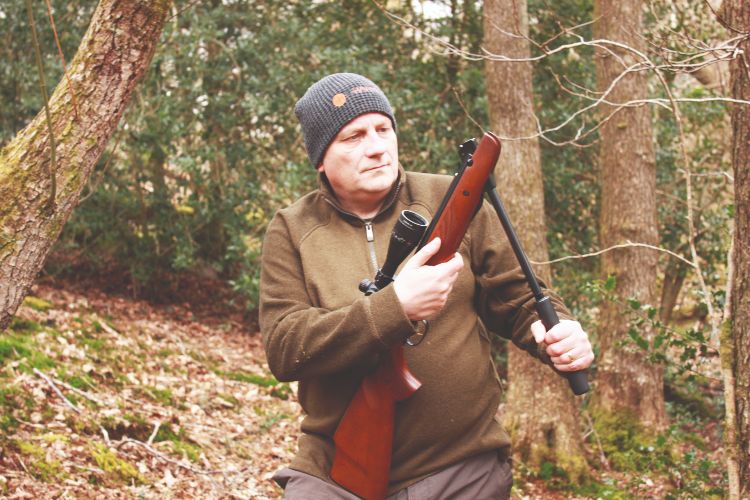
Before leaving the muzzle, I would like to draw your attention to the 1/2” threaded muzzle, fully out of sight, but certainly worthy of comment. Weihrauch have seen fit to offer 20mm of thread, which is substantially more than usually seen. Possibly a personal thing, but I can’t stand to see ‘mean’ barrel threading, where the thread is of scant length. I want to see as much contact between the barrel and moderator as possible, especially on a break-barrel gun, so top marks for me seeing it here.
BACK TO THE ACTION
Despite this gun having a smaller 26mm cylinder, the barrel actually has the same diameter as the HW80, and parity of size extends to the breech block. In practical terms, this means that barrels are interchangeable, should you be in the mood to do so. The breech itself is probably oversized for the work it does, although no complaints from me because I like the idea of heavy-duty components. These moderated guns are ‘scope only’, with no drillings in the breech to accept open sights, but it would be no task to replace barrels if you wanted that facility. An area which has been left untouched, thankfully, is the Rekord trigger, which has been a Weihrauch staple for the past 60-odd years. I do wonder if the engineers who designed this unit had any idea back then, that this unit would have such a long and illustrious career. Along with the Air Arms CD unit, it really is just about the best you can get. The only improvement I have found in recent years is the Rowan extra-setback trigger blade, which effectively moves the trigger blade back giving better trigger contact for those whose digits are a little shorter – I count myself in that number.
An automatic safety catch accompanies these Rekord units, automatic engagement on cocking, although they can’t be reset once disengaged, unless you re-break the barrel. If this is a particular gripe it is possible to fit after-market resettable safety catches. No anti-bear trap devices are fitted to the HW95, so they can be de-cocked as necessary, which seems a popular feature with many hunters.
At the rear of the action there will be a series of three scope arrestor holes, which effectively eliminate scope creep when used with a suitable mount. If you find a gun that threatens to loosen your fillings on each discharge, you have a gun that has been potched with (Welsh for ‘messed with’) – standard guns are sweet to shoot, and therefore easy to spot.
NEW CLOTHES
The final part that has undergone a redesign is the stock, and I have to say, those responsible have done a particularly excellent job of things.
Starting with a tapered fore end, which extends as far as the breech, reaching back to the fore end chequered grip that has a rounded feel, and very comfortable to the leading hand. Original guns were less contoured, still good, although these new models feel a lot better.
More chequering is available at the grip, the appearance of which is almost 3D in nature – it’s a strange optical experience, when coupled with the stock’s grain, which is very pleasant indeed. On the subject of grain, the timber on these stocks although beech, is very attractive. I know this will vary from gun to gun, but all the ones I’ve seen look particularly good.
The rear stock will please the 10% of the population that are sinister, and by that I mean ‘left-handed’. An angular, medium height cheekpiece adorns each side, so that right-handers can also practise left-handed shooting should a situation arise in the field where a shot for access reasons needs to be taken off the left shoulder. I found the cheekpiece to be just right for a 3-9 x 40 scope in medium mounts, which is about as big as I would want to go on this gun.
There is something a little retro about the shape of the cheekpiece, putting me in mind of the Original Model 50, which as far as I’m concerned, is no bad thing. As you would expect, the fit and finish of the stock is beyond criticism. I like everything about it very much, even down to the colour of the finish.
OUT ON THE FARM
After preliminary zeroing and some range practice with .22 JSB Exact pellets, I was totally convinced of my abilities to dispatch extra-strong mints out to 30m consistently. I was struck by the overall smoothness of the gun, both the cocking cycle, and discharge. With any muzzle blast taken care of, the mechanical noise was better appreciated, although this too was minimal, which made me wonder if there is now some extra fitting at the factory. Running a series of shots over the chronograph confirmed single-figure consistency with an average 11.1 ft.lbs. Buoyed with confidence, I took the gun out for a trip around the woods on the farm, with a hope of encountering a squirrel or two because they have been causing a few problems of late. They must have seen my performance on the range and decided to keep a low profile because I didn’t see any, so I spent some time plinking at impromptu targets, safe in the knowledge that I was never going to run out of air. Even after a protracted time spent walking, there was no arm ache, the gun’s 3.4kg weight, and 97cm length underlining the fact that this gun was no chore to carry.
So, in conclusion, does this gun render the HW80 obsolete? No, not at all; the HW80 will always have a place in our hearts and cabinets, especially for those of us of a certain middle age. The HW95 offers a lighter weight option, which can be an important consideration. Ideally, I would advise handling the two and basing a decision on how it feels to you.
As promised, next month I will be taking my older HW95 into the workshop, and giving it a makeover. Think homage to the 1980s, with a bit of modern engineering thrown in for good measure – it’s going to be good, I promise!


